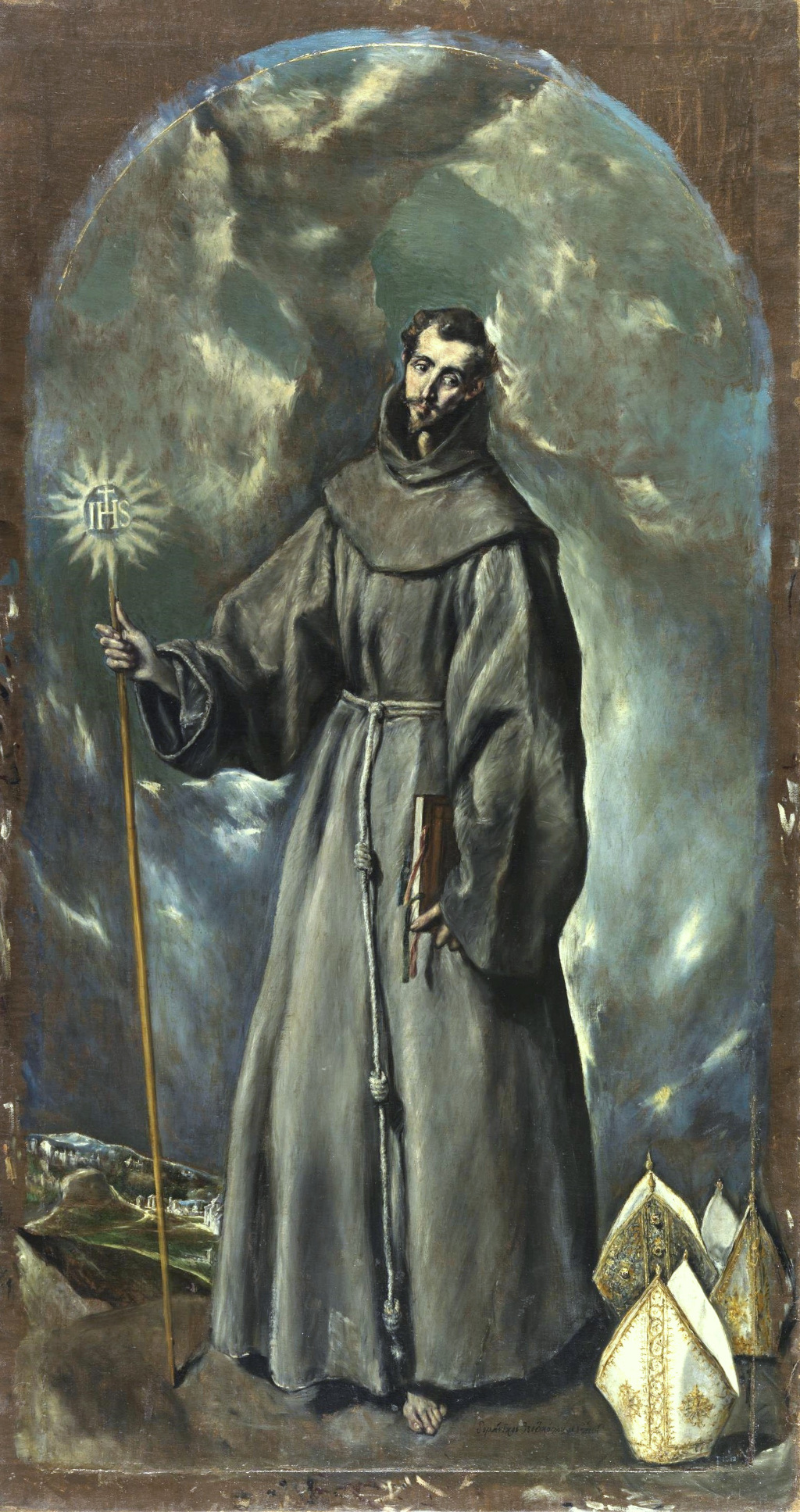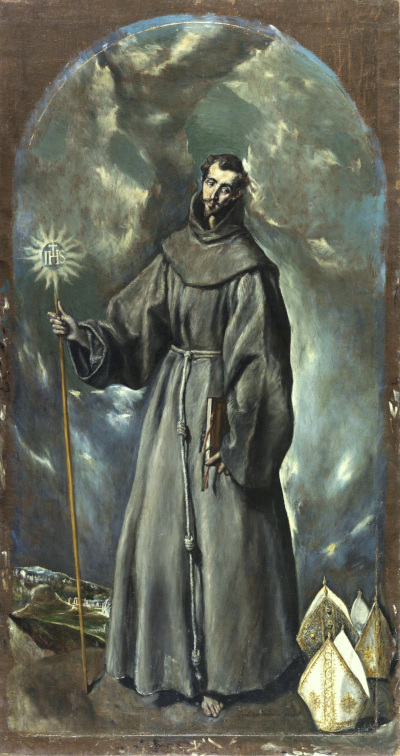Saint Bernardino of Siena by El Greco is dated at 1603. He would have been approached the end of his career at this stage and had completed most of his evolution as an artist.
The tall figure found here is dressed in the traditional robe of a Franciscan missionary. Saint Bernardino has appeared several times within paintings over the centuries, with most depictions adding visual clues alongside his own image. In the case of this El Greco painting, we find a cane being held in his right hand. At the tip of the cane are the letters IHS. He also holds a book under his other arm. We find further religious attire in the bottom right of the scene, whilst to the left we can spot Toledo's incredible landscape. Innovatively, the artist places the horizon very low, meaning Toledo cuts across the level of the subject's knees, leaving everything else above as sky. This area is expressive and dramatic, with little blue sky showing through. Instead, it is mainly dark cloud which dominates behind the tall figure of the saint. Notice also how small his head is, in relation to the rest of his body and this is in line with the way in which El Greco worked in the last 20 years of his career. Fingers would often be very long and slim, but in this example they are not particularly prominent.
The artist passed away in 1614, meaning this piece arrived just twelve years before his death. By this stage he had taken in influences from Crete, Italy and Spain and built an impressive reputation for technical brilliance and artistic innovation. He became an important member of the Spanish Renaissance, even though he was not born in this region. Many loved his work, both then and now, and his style makes most of his paintings instantly recognisable as his own. After his death a number of artists would continue to work in a similar manner, helping to keep his spirit alive for several more decades, before for a period his name was lost to art historians. By the 19th century, though, he re-appeared and is today one of the most popular painters from that period in European art history.
The traditional clothing found in this painting continued into many El Greco paintings. This modest look was ideally suited to the type of moral guidance that some of these artworks brought to our attention. Additionally, he depicted many religious figures within his career, and so clothing such as this would inevitably appear every now and again. The artist himself was connected to God and was happy to capture such iconic moments, with the Bible featuring regularly within his career. Aside from religious scenes, there were also privately-commissioned portraits which tended to be of local Toledo residents, most of whom would be known to the artist himself, or an intermediary who would put the two in contact. In his honour, a museum has been set up in Toledo and it features many of the artworks that he produced here, some of which include the stunning landscape across their background.





